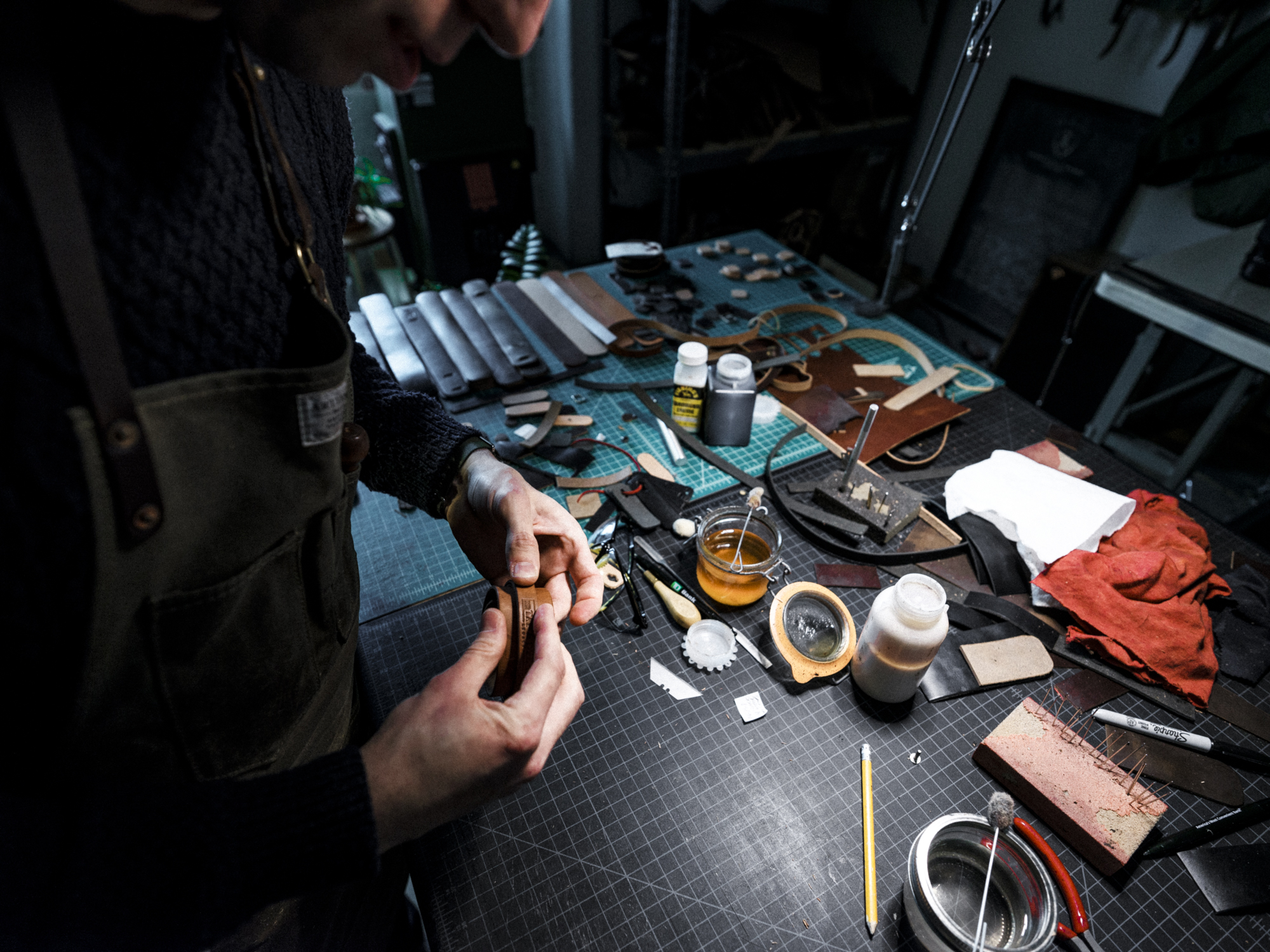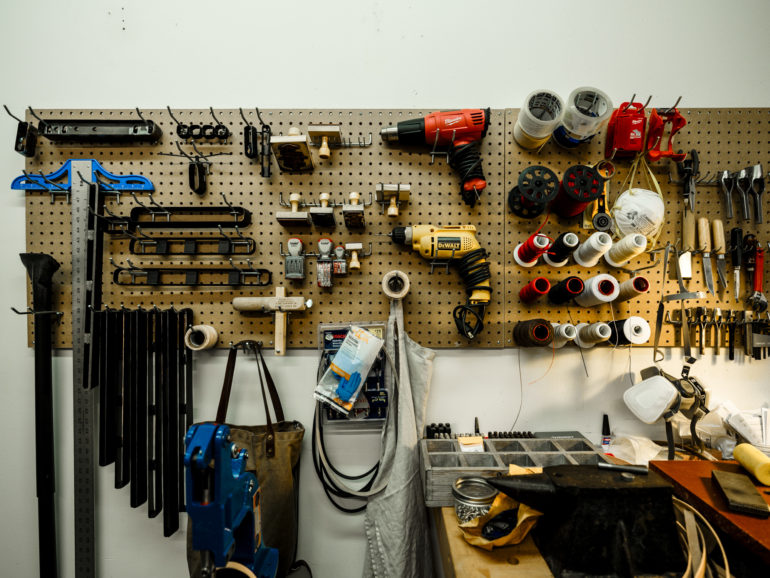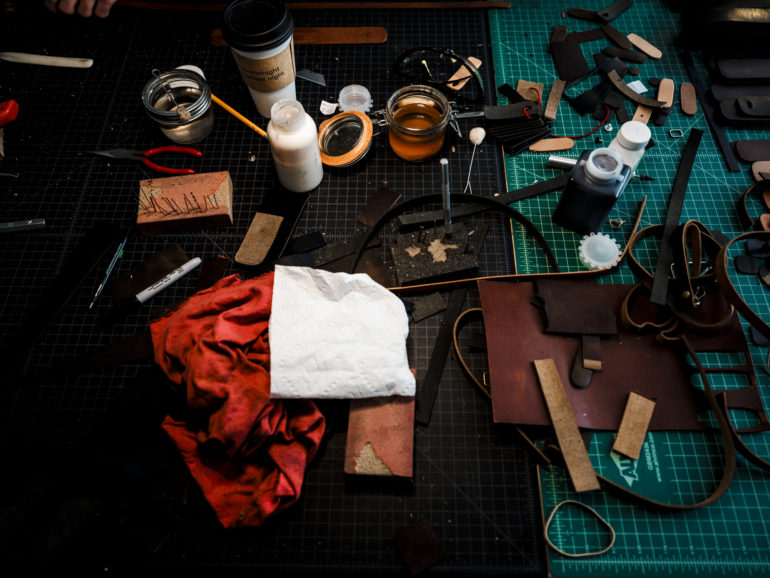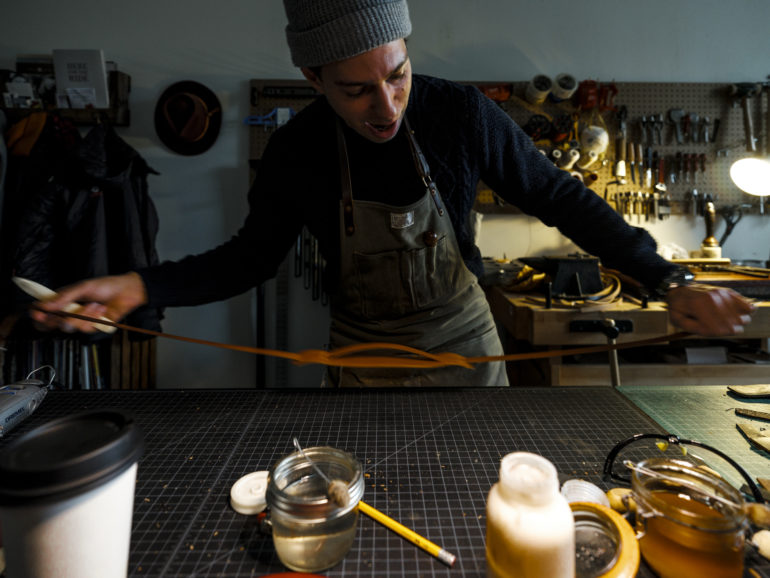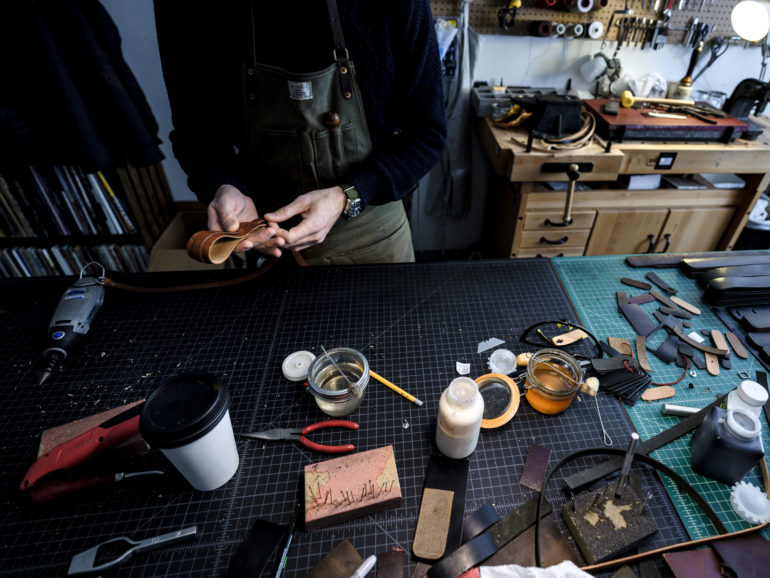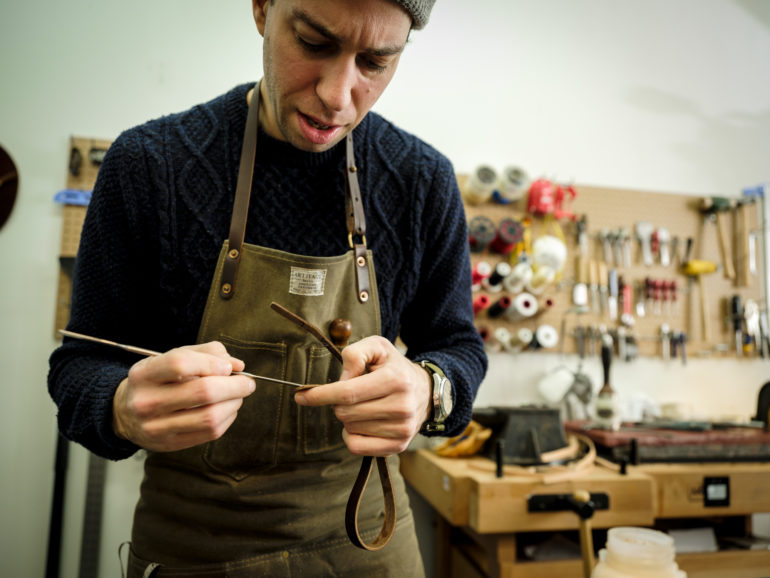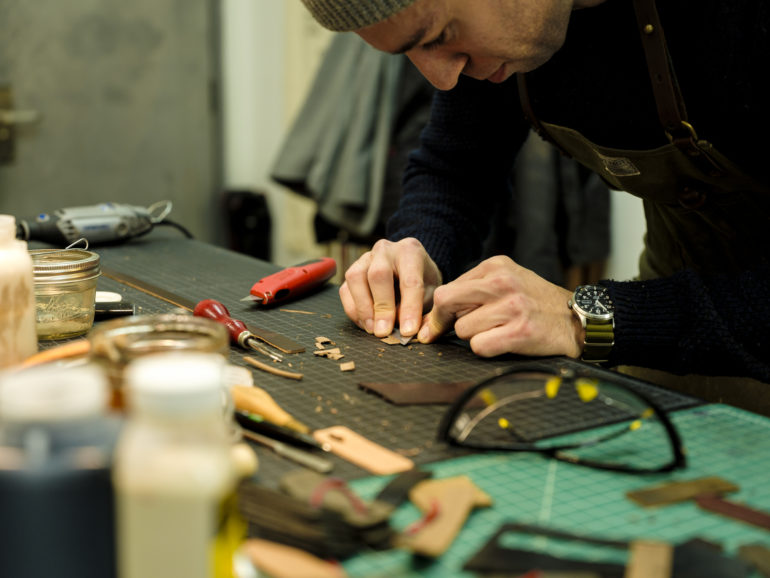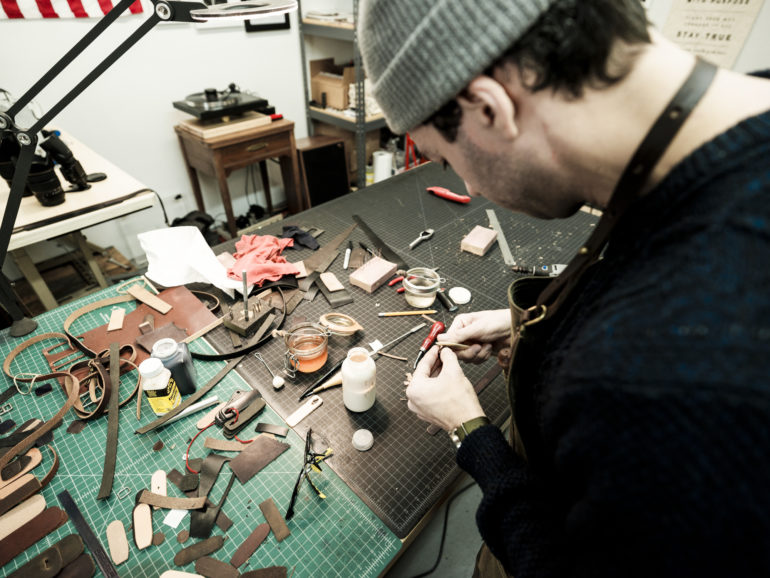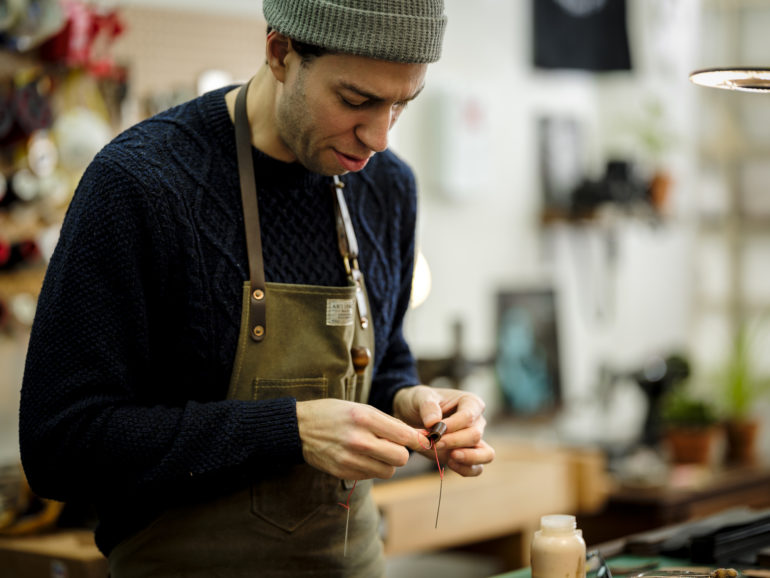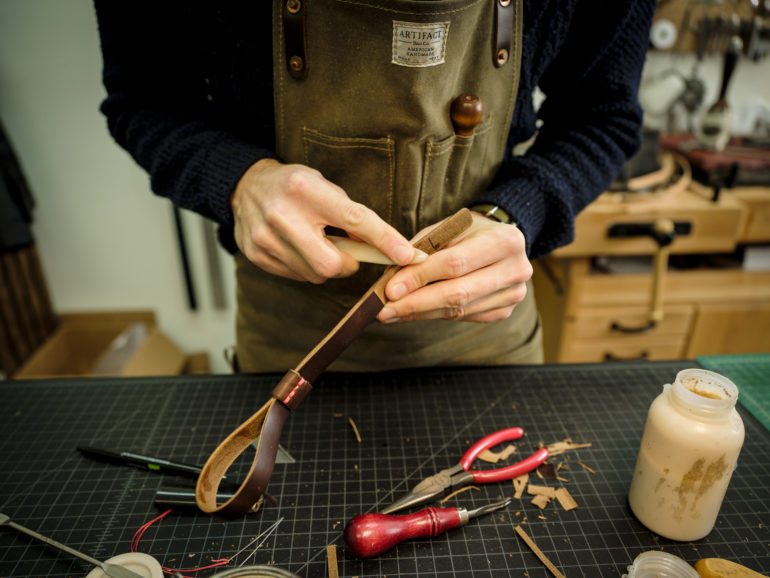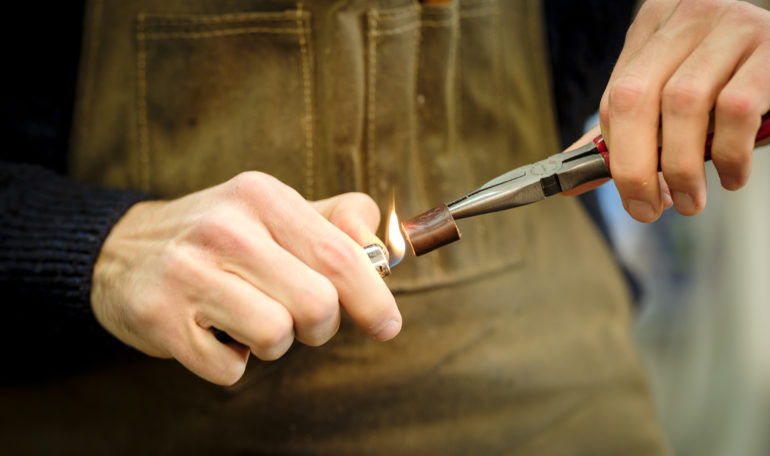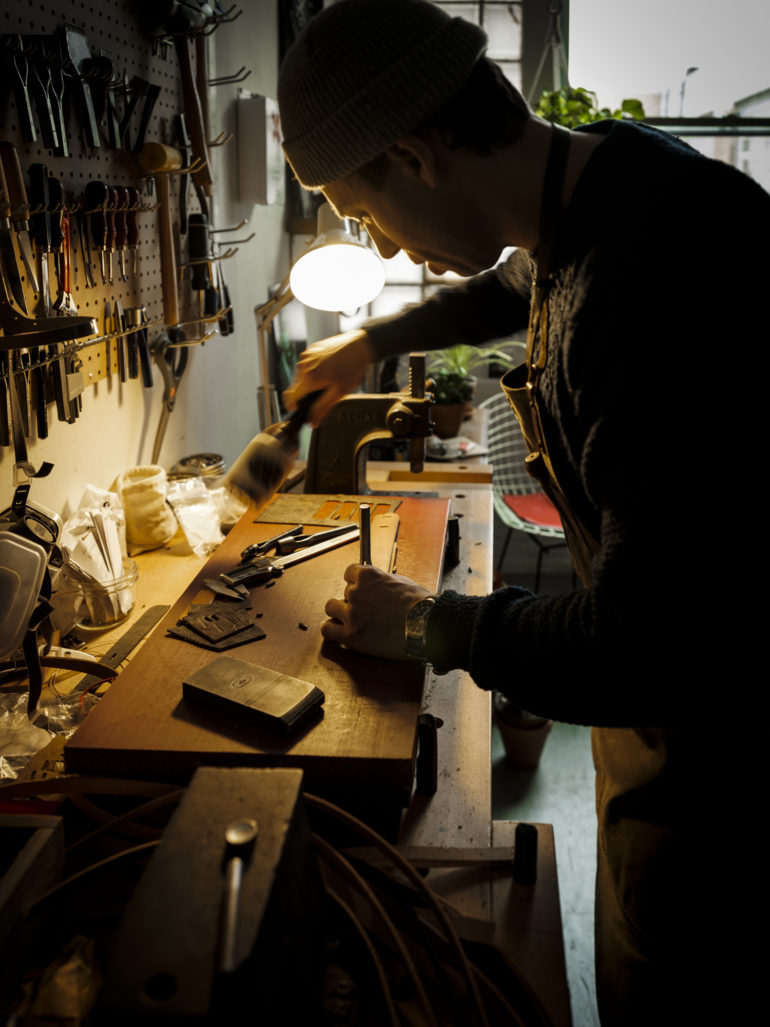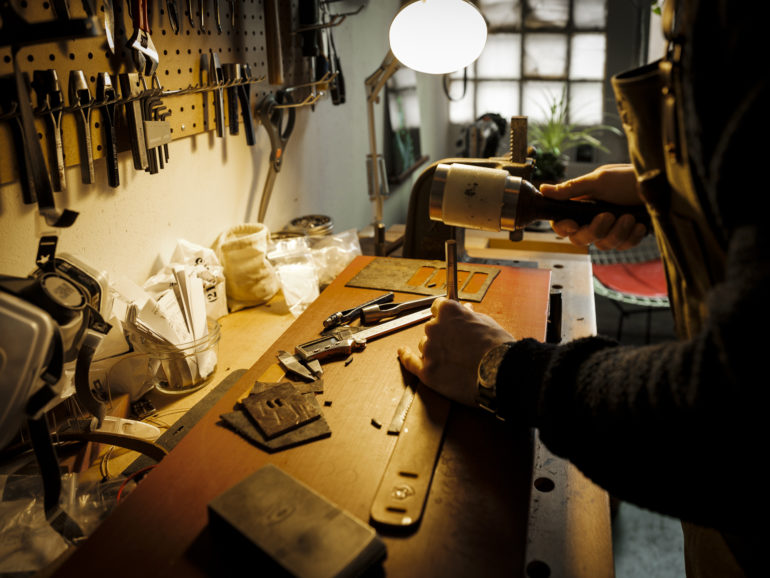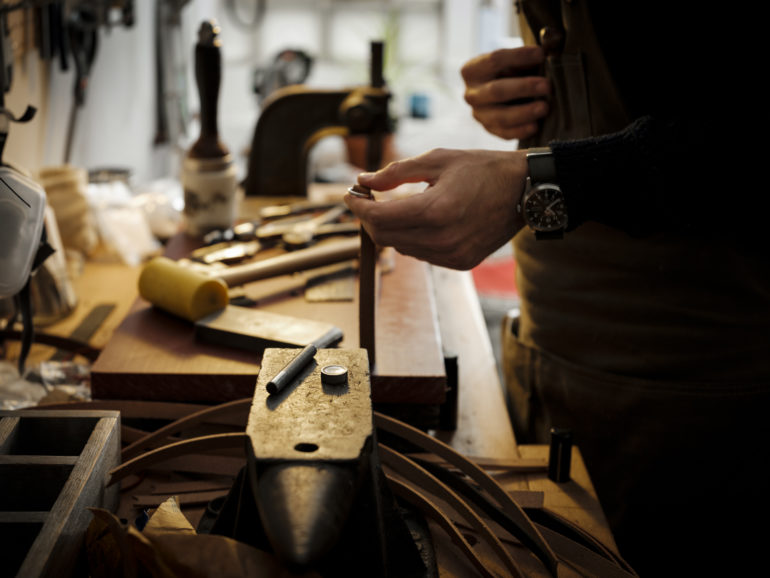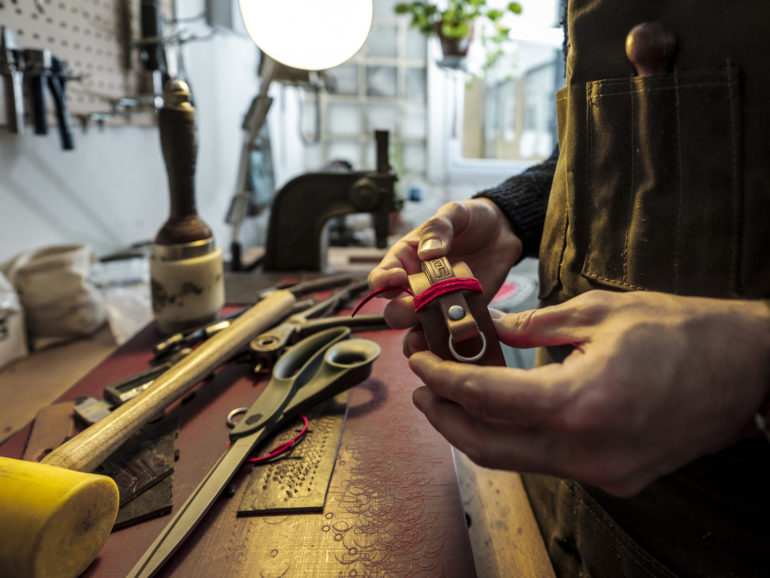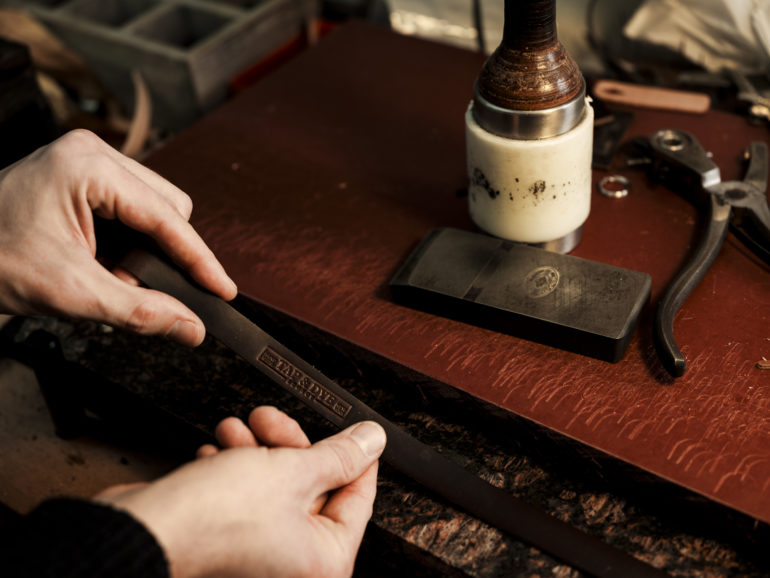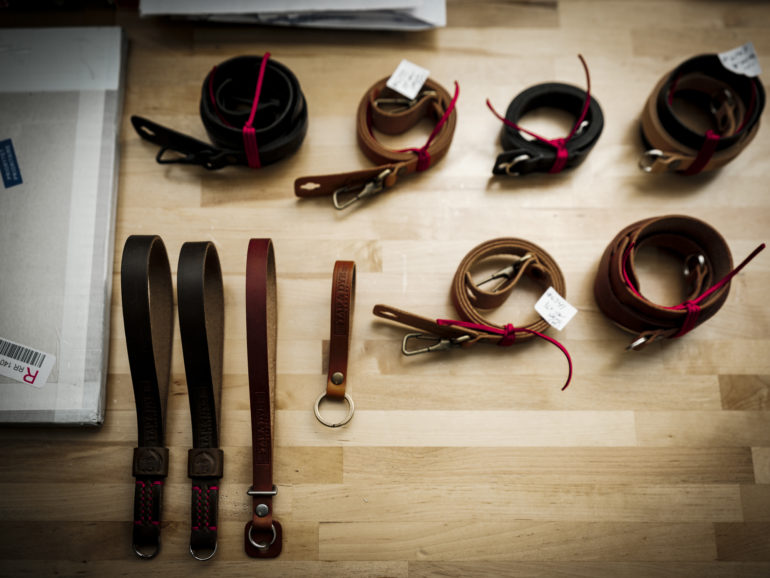Last Updated on 02/20/2018 by Mark Beckenbach
TAP and DYE are one of the most revered modern camera strap makers. And they’re more or less made by one guy.
When you visit the workspace of TAP and DYE, you see a well manicured, clean, and well organized workspace that outputs any number of camera straps a day. In many ways, it looks like those picturesque photos of random things presented neatly. There are tools on a green desk for creating the straps, other tools on a wall, leather of various types in one corner, vintage machines that simply work on any given side, and a number of gorgeous vintage cameras that are used for product photography. The space isn’t large; in fact it’s probably around 1/3rd of the size of my two bedroom apartment in Brooklyn.
Editor’s Note: While a story like this may seem like it was sponsored, it wasn’t at all. I genuinely wanted to test the Fujifilm GFX and lenses in a different way. All of these images were shot with a number of lenses for the GF system, a flash, and then edited in Lightroom.
The workshop at TAP and DYE isn’t unlike a number of other workshops that produce artisan quality products; but this particular workshop has something very special to it. It’s a hard find–TAP and DYE’s workspace only recently became a dedicated workspace. Justin Waldinger, the company’s founder and the man behind TAP and DYE, used to do everything out of his apartment in Queens, NY. These days, he makes all of his products out of an East Williamsburg artist loft space. The space, much like many other artist spaces, is shared amongst a number of tenants. When the operation became too big, Justin decided to move it to an actual dedicated space. All around you’ll find leather, canvas, sewing materials, a number of work benches, and camera memorabilia.
Justin comes into the workshop nearly every day. When this story was shot, it was during the Christmas season, and he was busy making a number of straps to ship out before the holidays. Justin’s strap making process builds on what artisans did for many years. TAP and DYE’s straps are made from various different types of leather. They’re all sealed with beeswax and designed to look better with age. The straps will crack, stretch, and get wear on them. But they’re always gorgeous. I met Justin years ago at a cafe during a very cold snowy season. I had just left B&H Photo to run the Phoblographer full time and he had left his day job as a designer to create camera straps. His first strap was a wrist strap that Justin purposely pitched to me to be used with my Olympus OMD EM5. Like every first generation product, it was okay. But as time went on, TAP and DYE’s straps continued to improve and even gained the attention of a number of other companies who wanted to do the same thing. Since then, we’ve reported and reviewed a number of his new wares.
Notice how I’m saying “his.” That’s because every single strap made from TAP and DYE is made by Justin. He’s had to become a jack of all trades. That means:
- Leatherworker
- Product Designer
- Social Media Manager
- Shift manager
- HR director
- Photographer
- Product Manager
- Director of the Shipping Department
- Packer
- Heavy machine operator
I’m sure I’m missing a few jobs there, but all of it is done alone by Justin as of my last visit. He’s come to rely on himself; which has really worked out. Justin continues to keep making straps and TAP and DYE straps are all over Instagram, Facebook, etc. They’re shared by a number of folks via social media and prided almost as pieces of beautiful jewelry. Justin finds these images and shares them on the accounts. Plus he sends out emails, uses social media advertising, etc. In addition to that, he talks to the press and influencers. It’s brilliant, and in many ways he built his company in the same way I did: through symbiotic marketing and sharing audiences with one another for organic grown and engagement vs shelling out excessive amounts of dollars for advertising. For small companies like his, social media marketing has made the most sense.
TAP and DYE’s straps are made by using American leather which Justin sources. He shares this similarity with the likes of Holdfast Gear, Cub and CO, and a number of other very good American camera strap makers. But unlike the others, Justin doesn’t make bags. He’s only recently gotten into making accessories such as his own film cases. All of his materials are brand new–they’re not recycled. There are various types. One of the finest is Horween Chromexcel leather–which is both soft and strong. I was gifted one of these straps for review awhile back and I continue to use it to this day. The only other strap manufacturer that uses it as of this story’s publishing isn’t based in America.
On Justin’s main work desk there are a number of accessories involved in making the straps. There is glue, beeswax, scissors, exacto knives, etc. In the same way that a chef uses fresh ingredients to prepare a fine meal, Justin uses all of these tools with a bit of raw material to finely craft a beautiful product. His straps are seen as being a bit pricey in the eyes of those less discerning. But for everyone who wants to have a bit of uniqueness to their straps, Justin’s work means the world.
Justin can start at any time of the day that he wishes. But what lots of folks don’t understand about a job like this is that while you’re making your own hours, you also almost never stop working–in fact, it makes sense to work when most other people are active and awake. It would be wonderful if one could just wake up, work two hours, and go about their day afterwards but it doesn’t work that way. Often, Justin needs to answer emails and inquiries via Facebook, Instagram, etc. So while most other people will be clocked in, Justin doesn’t necessarily clock out. Why can’t he hire other people, you may wonder? He’s currently in the process of looking; but with small companies, the operations need to be as efficient as possible in as few steps as possible. There isn’t a whole lot of money to be fussed around with. In some ways, this is nice; you’ve got no sales team that will complain about the brand of Seltzer they’re using to therefore rob a company of an extra $600/month. Instead it’s just you, and that $600/month can be split into materials, social media advertising, shipping, and the occassional IPA.
The way the business works is by managing the entire process online and directly. Orders are made directly via TAP and DYE’s website and via Etsy. When orders come in, Justin makes them all one by one. He doesn’t make extra products to stock up and with that in mind, he doesn’t need to fulfil an order from somewhere like Adorama for 700 that they can stock and keep in their store. Other camera straps manufacturers have taken the step to being sold in retailers, but not Justin. Like a number of other artisanal American brands, he prefers to keep it all internal. Paul C Buff did the same thing; so do a few others such as CUB and CO, etc. Instead of the mass market appeal strategy, every strap is custom made and handmade when the order comes in by Justin. The straps are made via a production process that starts with a piece of leather, evolves into use of string and natural materials, and continues on with stamping, branding, etc. With the operation being this small, he’s able to keep the operation running after taxes and all.
Justin has patterns already made and cut out. He then uses these and traces over the leather to cut it out and make brand new straps. The leather is then treated using a variety of methods but one of the most important pieces involves the use of beeswax. Beeswax acts as a natural sealant that keeps the straps weather sealed. Indeed, you can take a TAP and DYE strap out into the rain or snow and they’ll work with no issues. Most pieces of the straps are put together using only a single piece of leather to ensure strength and durability. Certain parts, such as pads, are sewn onto the main piece of leather or affixed using rivets.
A variety of tools are used in the process of making the straps: needles, razor blades, dremel tools for softening edges, brushes, glue, string, etc. When Justin first started the company, the process of strap making used to take a long time. But he’s become better and faster over the years. In the period that I was present for this photo story, Justin was able to crank out a number of straps. Granted, he was slowed down by my conversations with him. Getting each strap just perfect took a lot of time, patience and perfection. Knowing how to feel the leather and look at them to assure consistency isn’t simple. It’s surely a day job!
The process is a beautiful and curious one. Sometimes he does things like uses a lighter to sear the waxed thread on handmade straps as a sealant. Justin tends to move between tables and machines. He has an old school sewing machine, a main workbench table where the straps are mostly constructed, and another table where he puts the careful, fine details on straps. These include branding, stamps, etc.
The straps are also usually wrapped up here before they go off for shipping.


